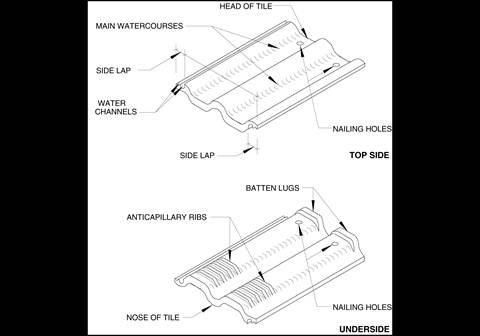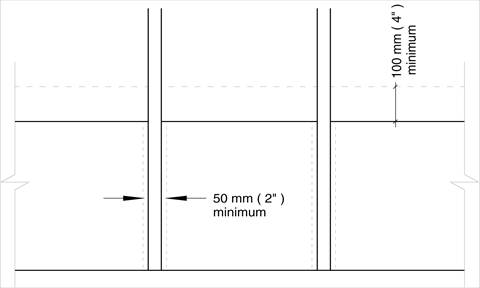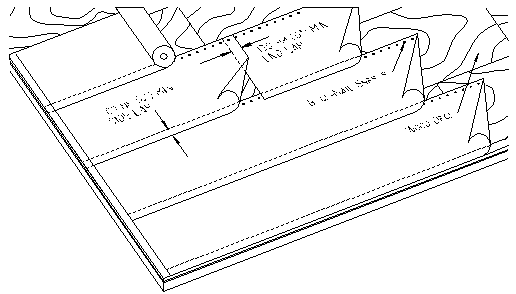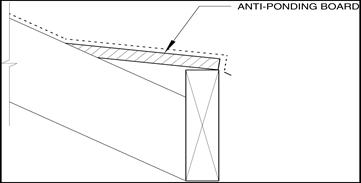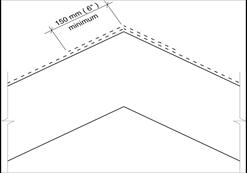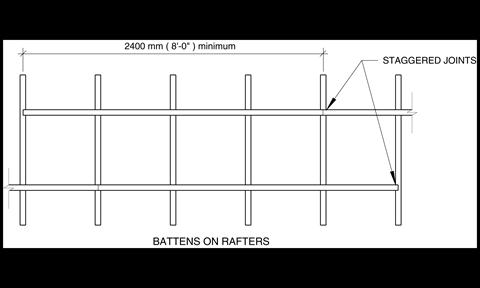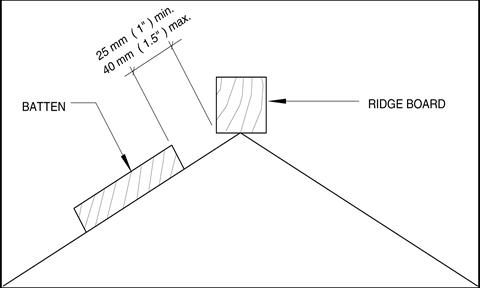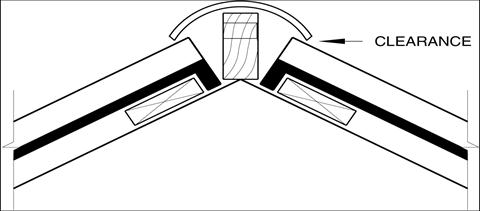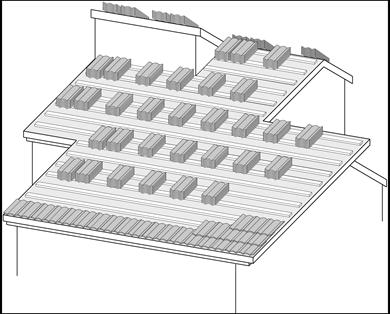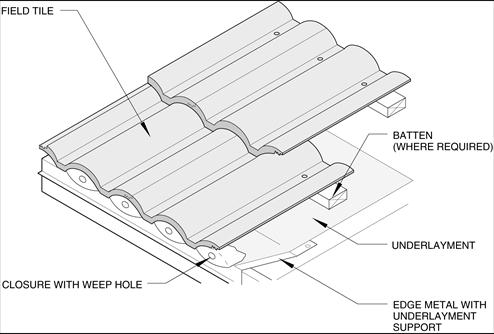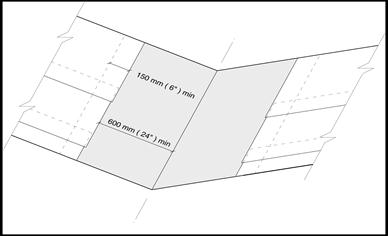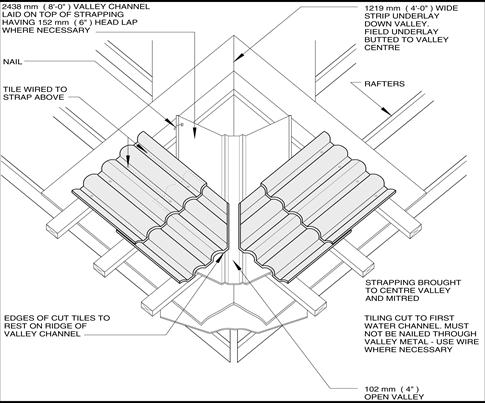Difference between revisions of "Tile Systems Standard"
Difference between revisions of "Tile Systems Standard"
| Line 10: | Line 10: | ||
<div class="col-md-9" id="mainBodyDiv"> | <div class="col-md-9" id="mainBodyDiv"> | ||
| + | <big><big>Division B - Standards</big></big> | ||
| + | <hr> | ||
<big><big><big><big><big>Standard for Tile Roof Systems</big></big></big></big></big> | <big><big><big><big><big>Standard for Tile Roof Systems</big></big></big></big></big> | ||
| − | + | {{Template:RPM Standard Header Pane (Primary)}} | |
| − | |||
| − | |||
| − | |||
| − | |||
| − | |||
| − | |||
| − | |||
| − | |||
| − | |||
| − | |||
| − | |||
| − | |||
| − | |||
| − | |||
| − | |||
| − | |||
| − | |||
| − | |||
| − | |||
{| class="wikitable" | {| class="wikitable" | ||
|- | |- | ||
| − | ! style="background-color: orange;" | | + | ! style="background-color: orange;" | Note to Reader |
|- | |- | ||
| style="background-color: #ffffcc;" | This section of the RCABC '''''Roofing Practices Manual''''' is to provide general information on interlocking concrete roofing. The information included is intended as a general guide for specifiers. '''''RoofStar Guarantees''''' are <b><u>NOT</u></b> available for concrete roof tiles. | | style="background-color: #ffffcc;" | This section of the RCABC '''''Roofing Practices Manual''''' is to provide general information on interlocking concrete roofing. The information included is intended as a general guide for specifiers. '''''RoofStar Guarantees''''' are <b><u>NOT</u></b> available for concrete roof tiles. | ||
Latest revision as of 20:44, 3 September 2021
Division B - Standards
Standard for Tile Roof Systems
The fourteen (14) Parts of this Standard contain the requirements, guiding principles, recommendations, and reference materials, necessary to design and construct a project that will qualify for a RoofStar 5-Year Guarantee or RoofStar 10-Year Guarantee.
Readers are advised to review relevant materials that can be accessed through the hyperlinks embedded in the body of text. Part titles shown in blue indicate hyperlinks to more relevant material that the reader is advised to consult.
Refer to Structure and Organization of RPM and Standards in Division A of this Manual for more information about this Standard.
© RCABC 2025
No reproduction of this Standard, in whole or in part, is lawful without the expressed permission of the RCABC.
| Note to Reader |
|---|
| This section of the RCABC Roofing Practices Manual is to provide general information on interlocking concrete roofing. The information included is intended as a general guide for specifiers. RoofStar Guarantees are NOT available for concrete roof tiles. |
1 GENERAL
Concrete tiles are available in a wide variety of styles and colours. Tiles are made of varying proportions of Portland Cement, sand and water, which is extruded in moulds under high pressure. Concrete roof tiles are manufactured to conform to CSA Standard A 220.0-M91.
2 MATERIALS
Concrete roof tiles are available in a wide variety of colours and styles and are frequently used to enhance the overall aesthetics of buildings.
Concrete roof tiles are made of varying proportions of Portland cement, sand and water, which is extruded on moulds under high pressure. Colour is either added to the surface or dispersed throughout the tile. Surface coloured tiles have more variety and resistance to staining by mildews, moss and pollution. Colour-through tiles keep their appearance better in heavy freeze-thaw cycling.
Standard weight concrete tiles have a minimum mass of 40 kg / m² (8 lb. / sq ft) which should be considered when calculating deck load. Manufacturers’ tile weights may vary. The minimum recommended slope for concrete tiles is 4" / 12" (1:3).
Concrete roof tiles come in two style groups with various colours and finishes:
- Roll Tile - S Shape (Spanish S)
- Flat Tile - Shake or Slate Shaped
- - Ribbed
Concrete tiles are typically installed over rigid underlayment or rolled underlayment on solid sheathing. The tiles are supported by 25 mm x 100 mm (1" x 4") nominal battens, which the tiles ‘lug’ rests against, and nails through two holes which are concealed by the lap of the next course.
3 APPLICATION
Conform to CSA Standards A220.1-M91 (recommended).
The details listed are a general guide to the application of concrete tiles’ underlayment, battens, layout and related flashings.
3.1 Deck Requirements
3.2 Underlayment and Eave Protection
Underlayment is an integral part of concrete tile roofing systems.
- Rigid Underlayment
- Made of several plies of wood fibre material then laminated with aluminum on one side and polyethylene on the other. It comes in sheet form and may be applied directly over roof joists under the battens.
- Rolled Underlayment
- Can be #30 organic felt or a multi-layered laminated product. Felt underlayment can only be used over plywood sheathing, under the battens.
All penetrations, soil stacks, chimneys, vents, etc. should be sealed to the underlay.
Underlayments must be applied in ‘shingle’ fashion overlapping the fascia by at least 40 mm (1-1/2").
Rigid underlayment, nominally 1200 mm x 2500 mm (48" x 100"), is installed with the long side perpendicular to the slope with a minimum 50 mm (2") side lap centred on the rafters a min. 100 mm (4") overlap on previous courses.
Rolled underlayment is 900 mm - 1000 mm (36" - 39") in width and varying lengths. It is installed perpendicular to the slope with succeeding courses overlapping the previous by a minimum of 100 mm (4") and end laps a minimum of 150 mm (6").
Where a fascia board is used, the underlayment shall be fastened to the top of the fascia board at the junction of the rafter and fascia.
The underlayment shall lap ridges and hips 150 mm (6") in each direction, providing a total 300 mm (12") overlap.
3.3 Battens & Nailers
Battens are installed in conjunction with and overtop of the underlayment. The battens provide support and securement for concrete tiles.
Battens are installed perpendicular to the slope, spaced to ensure a minimum 40 mm (1.5") overhang of fascia and a minimal 75 mm (3") head lap on succeeding courses. The ridge batten should be between 25 mm (1") and 40 mm (1.5") from the ridge board.
Ridge and hip boards are installed to support and provide nail securement for ridge and hip tiles. Ridge and hip boards must be installed to a height which will support the entire weight of the tile with a minimum 3 mm (1/8") clearance of the field tiles.
3.4 Tiles
Concrete tiles are laid in shingle fashion starting at a bottom corner. To prevent excess traffic on the tiles, the roof should be loaded before any tiles are laid, usually in evenly spaced stacks of six.
Tiles are placed with the lug resting on the upperside of the batten. Nails should be a minimum 12 ga. Hot dipped galvanized, long enough to penetrate the battens but not through, to avoid penetrating the underlay. Nails should be driven just flush. Underdriven nails can crack the tile above them. Overdriving nails can crack the tile being fastened.
3.5 Valleys
Valleys are underlayed before the field with the underlayment running centred on and parallel to the slope of the valley base. Field underlayment should overlap the valley by a minimum 150 mm (6").
Valley flashing should be 1200 mm (24") min. wide and 2400 mm (8') long with a 20 mm (1/2") divider, made of 26 ga. pre-painted steel.
The flashing should be made to conform to the valley attached with clips or nails bent over the flashing but not driven through. Under 150 mm (6") min. Laps, the previous piece should be nailed.
Valley peaks and terminations of blind valleys require lead (3 lb) transitions.
3.6 Hips & Ridges
Ridge and hip tiles are applied after the field tiles are terminated against the nailer board. A sealant, mortar or plaster cement should be applied to the tops of the field tile and between laps of the ridge / hip tile. This prevents entry of wind driven rain or snow.
Tiles are started at the low end of hips or the leeward end of ridges. Each tile is nailed through the hole provided into the nailer. The lap of the next tile covers the nail. The last ridge tile nails will have to be caulked.
Refer to Construction Detail E4.7.1 Tile (Hips & Ridges).
3.7 Rake Edges
Rake tiles cover the exposed edge of field tiles at fascia boards. This helps prevent wind driven rain from entering the system and provides an attractive finish. Rake tiles “butt” against the lower edge of the field tile courses then are fastened with two nails into the fascia.
Refer to Construction Detail E4.7.2 Tile (Rake Edge).
3.8 Flashings: Protrusions, Walls and Curbs
Flashings bridge the gap between field areas and any protrusions such as pipes, vents, and adjoining walls. Because these items impede the flow of water, small deficiencies can cause high amounts of water to enter the building. Proper detail work will make the difference between a successful or problematic roof.
Pipe Flashings:
Pipe flashings (E4.7.3 Tile (Pipe Flashings)) are made of lead which conforms well to the tiles’ surface. They are applied over the course of tile penetrated by the pipe and under the next course with a 75 mm (3") min. lap.
Walls Perpendicular to Slope:
Flashing for a wall termination (E4.7.4 Tile (Roof/Wall Transition)) should lap the tile by a minimum of 100 mm (4"). Material should be the 26 ga. prepainted galvanized with S locks or standing seams to join lengths.
A mortar or mastic bedding should be applied to the tops of the concrete tile before flashing to prevent wind blown rain or vermin from entering.
Curb Flashings:
Curb flashings (See E4.7.5 Tile (Curb Flashing)) are applied around skylights, chimneys or other larger penetrations. The basic principle is to deflect the water rushing against the uproof side, safely around then on top of the tiles on the down roof side.
The recommended method is to use 3 lb. lead sheeting due to its malleability and, therefore, easy conformance to the tile’s contour.
Upper and lower flashings should be conformed with tile’s surface.
Upper flashings should extend 150 mm (6") past corners on each side, then formed around soakers.
Lower flashing should extend 100 mm (4") past corners and lapped under the soakers.
For information on qualified RCABC contractors installing concrete tile roofing, please call RCABC at: (604) 882-9734 or submit an email inquiry to info@rcabc.org.
3.9 Nailing Requirements
Nailing frequency is determined by slope, local wind conditions and seismic zoning.
| STANDARD CONDITIONS CSA CLAUSE 11.2.2.2 | ||
| Roof Slope | Fastening for Tile | Fastening at eaves, gables, hips and ridges |
| > 1:3 < 1:1.7 | Nail or clip the tiles in every third course | Nail or clip: (a) first two courses along the eaves (b) first two courses or tiles each side of hips or ridges; and (c) first two rows in from all gables |
| > 1:1.7 < 1:1 | Nail or clip the tiles in alternate courses | |
| > 1.1 < 1.25:1 | Nail or clip every tile | Nail or clip every tile |
| > 1.25:1 | Nail or clip every tile | Nail or clip every tile |
| SEISMIC ZONE 4 OR GREATER CSA CLAUSE 11.2.2.3 | ||
| Roof Slope | Fastening for Tile | Fastening at eaves, gables, hips and ridges |
| > 1:3 < 1:1.7 | Nail or clip the tiles in every third course | Nail or clip: (a) first three courses along the eaves (b) first three courses or tiles each side of hips or ridges; and (c) first three rows in from all gables |
| > 1:1.7 < 1:1 | Nail or clip the tiles in alternate courses | |
| > 1.1 | Nail and clip every tile | Nail and clip every tile |
| HIGH WIND CONDITIONS CSA CLAUSE 11.2.2.3 | ||
| Roof Slope | Fastening for Tile | Fastening at eaves, gables, hips and ridges |
| > 1:3 < 1:1.7 | Nail and clip the tiles in every third course | Nail or clip: (a) first three courses along the eaves (b) first three courses or tiles each side of hips or ridges; and (c) first three rows in from all gables |
| > 1:1.7 < 1:1 | Nail or clip the tiles in alternate courses | |
| > 1.1 | Nail and clip every tile | Nail and clip every tile |
In areas with both high wind and seismic activity the more stringent requirements should apply.
© RCABC 2025
RoofStarTM is a registered Trademark of the RCABC.
No reproduction of this material, in whole or in part, is lawful without the expressed permission of the RCABC Guarantee Corp.

